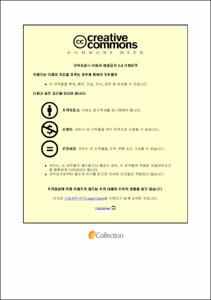The improvement in ionic conductivity of latex binder using Styrenesulfonic acid sodium salt hydrate (NaSS) for lithium secondary battery
- Abstract
- 리튬 이차전지의 구성은 크게 양극, 음극, 분리막 그리고 전해액으로 나뉜다. 특히 전도성 고분자(바인더) 소재는 전극의 활물질, 도전재, 집전체의 결착을 가능하게 하여 전극 내 전기적인 네크워크를 형성시키기 위한 필수 소재이다. 리튬 이차전지의 용량이 증가함에 따라 급속충전에 대한 수요 역시 늘고 있다. 하지만 짧은 시간 내 많은 에너지의 주입으로 전극에서는 부피 팽창에 의한 기계적 손상과 전기저항 증가로 인한 열적 손상이 발생한다. 따라서 급속충전 시 발생하는 전극 저항의 문제를 해결하기 위하여 바인더의 관점에서 이를 최소화하기 리튬 이온전도성을 향상시키고자 한다.
본 논문에서는 비공유 전자 쌍을 가지는 sulfonic group(SO3H)이 포함된 monomer, NaSS(Styrenesulfonic acid sodium salt hydrate)를 도입하여 PS(Polystyrene)와 중합을 실시하였다. Styrene과 NaSS 함량 별 (PS-co-NaSS) core 구조를 만들고 아크릴계 monomer(AN, BA)와 개시제(GMA), acid(IA), hydroxy group 가지는 monomer(4-HBA)를 이용해 전극의 접착강도를 증가시키고 이온전도성 향상으로 전극 저항을 감소시켰다. 전도성 고분자(바인더)의 성능을 확인하기 위해 이온전도도 분석, 리튬 이온 transfer number, swelling test, 접촉각 측정, 전극 접착력을 측정하였다. 또한 NG(Nature Graphite)와 LFP(Lithium Iron Phosphate)에 바인더를 각각 적용시켜 전극을 만들고, coin-cell 형태로 half cell를 만들었다. 최종적으로 전기화학적 성능을 평가하기 위하여 수명, 율속, 임피던스, 순환 전압전류법을 분석을 하였으며, NaSS 함량에 따른 전지의 성능을 비교 분석하였다.
|A lithium secondary battery (LIB) is largely divided into a positive electrode, a negative electrode, a separator, and an electrolyte. In particular, the conductive polymeric binder is an essential material for forming an electrical network within the electrode by enabling binding of the active material, conductive material, and current collector of the electrode. As the capacity of LIBs increase, the demand for rapid charging is also increasing. However, due to the injection of a lot of energy within a short time, mechanical damage due to volume expansion and thermal damage due to an increase in electrical resistance occur in the electrode. Therefore, in order to solve the problem of electrode resistance that occurs during rapid charging, it is intended to improve lithium-ion conductivity by minimizing this from the viewpoint of the binder.
In this paper, a monomer containing a sulfonic group (–SO3H) having a lone pair of electrons, Styrenesulfonic acid sodium salt hydrate (NaSS), was introduced and polymerized with Polystyrene (PS). Create a core structure for each NaSS content (PS-co-NaSS) and increase the adhesive strength of the electrode using an acrylic monomer (AN, BA), an initiator (GMA), acid (IA), and a monomer with a hydroxy group (4-HBA). Electrode resistance was reduced by improving ionic conductivity. To check the performance of the conductive polymer (binder), ion conductivity analysis, lithium ion transfer number, swelling test, contact angle measurement, and electrode adhesion were measured. In addition, a binder was applied to the cathode and anode respectively in NG (Nature Graphite) and LFP (Lithium Iron Phosphate) to make an electrode, and a half cell in the form of a coin-cell was made. Finally, in order to evaluate the electrochemical performance, lifetime, rate, impedance, and cyclic voltammetry were analyzed, and the performance of the battery according to the NaSS content was comparatively analyzed.
- Issued Date
- 2022
- Awarded Date
- 2022-02
- Type
- dissertation
- Alternative Author(s)
- Moongi Kim
- Affiliation
- 울산대학교
- Department
- 일반대학원 화학공학전공
- Advisor
- 오은석
- Degree
- Master
- Publisher
- 울산대학교 일반대학원 화학공학전공
- Language
- eng
- Rights
- 울산대학교 논문은 저작권에 의해 보호 받습니다.
- Appears in Collections:
- Chemical Engineering > 1. Theses (Master)
- 파일 목록
-
-
Download
 200000605955.pdf
기타 데이터 / 2.77 MB / Adobe PDF
200000605955.pdf
기타 데이터 / 2.77 MB / Adobe PDF
-
Items in Repository are protected by copyright, with all rights reserved, unless otherwise indicated.